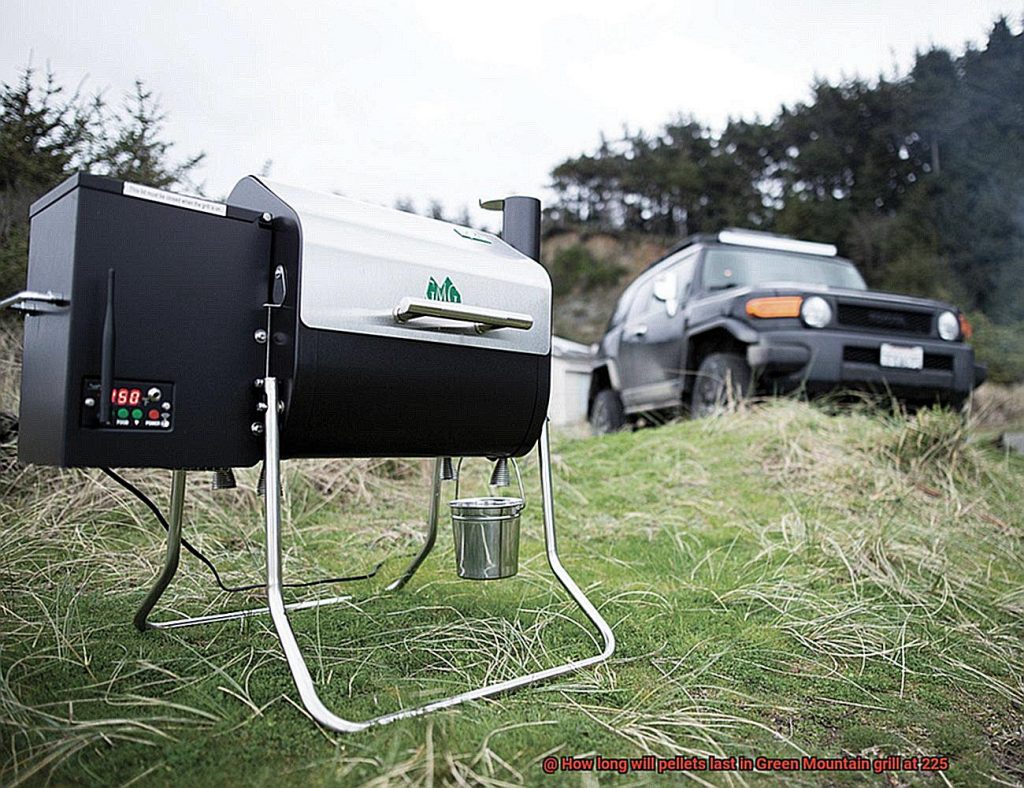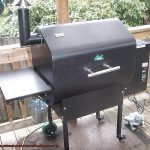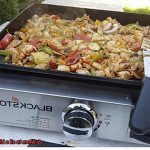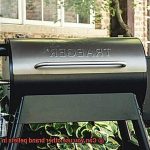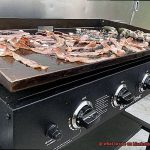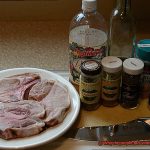Imagine this: you’ve been eagerly anticipating your summer BBQ for weeks. You’ve invited all your friends over, the drinks are chilled, and the meat is marinated to perfection. But when you go to light up your Traeger Timberline, it refuses to ignite. Panic sets in as you frantically search for answers to the age-old question: “why won’t my Traeger Timberline start?”
Don’t worry, grill aficionado, because you’re not alone in this predicament. There are a few common reasons why your Traeger Timberline may not be igniting, and with a little troubleshooting, you can have it up and running in no time.
In this blog post, we’ll delve into the potential issues that could be causing your Traeger Timberline to fail and provide practical solutions to fix the problem. From checking your fuel source to examining the igniter rod, we’ll cover everything you need to know to get your grill back on track.
Whether you’re a seasoned pro or just starting out on your grilling journey, read on to discover why your Traeger Timberline may not be igniting and how you can get it roaring again for a summer filled with mouth-watering BBQ goodness.
Contents
Reasons Why Your Traeger Timberline May Not Be Igniting
Grilling can be an enjoyable experience, but sometimes it can be frustrating when your Traeger Timberline grill won’t ignite. Fortunately, there are several reasons why this may occur, and we’ve compiled a list of the most common causes.
Firstly, ensure that your grill is connected to a power source. Without power, your grill won’t ignite no matter what you do. If you’ve verified that the power outlet is functioning correctly, move on to checking the firepot. The firepot is where the pellets are burned, and if it’s clogged with ash or debris, the pellets won’t ignite correctly. It’s essential to clean out the firepot regularly to avoid this issue.
The second reason why your grill may not be igniting is due to damp pellets. Pellets exposed to moisture won’t ignite properly. It’s critical to store your pellets in a dry place, and if you suspect they’re damp, try drying them out in the sun before using them.
The third reason why your Traeger Timberline may not be igniting is due to a jammed auger. The auger feeds pellets into the firepot, and if it’s jammed with debris or pellets, they won’t reach the firepot. Ensure that you regularly clean out your auger to prevent this issue.
Lastly, a faulty igniter can also prevent your grill from igniting. If you’ve ruled out all other possible causes and your grill still won’t ignite, it’s possible that the igniter needs to be replaced. You can buy a replacement igniter from Traeger or a third-party vendor.
To summarize, several reasons could cause your Traeger Timberline grill not to ignite.
Wet or Improperly Stored Pellets
Before you get frustrated, consider the possibility of wet or improperly stored pellets being the culprit. As an expert in this area, I’m here to offer some advice.
Firstly, wood pellets are designed to burn efficiently, but they’re not invincible. When exposed to moisture, they will absorb it and become damp, leading to ignition issues. That’s why it’s important to store your pellets in a dry, cool place like a shed or garage, away from any moisture.
Secondly, the quality of your wood pellets matters. Low-quality pellets may contain excessive sawdust and impurities that can affect their ability to burn efficiently. It’s always best to purchase your pellets from a reputable supplier and read reviews before making a purchase.
Thirdly, don’t forget about your grill’s hopper. It’s crucial to keep it covered when not in use to prevent rainwater from entering and causing the pellets to become wet. Always clean out the hopper before adding new pellets as leftover debris or ash can cause dampness.
To summarize, here are some simple tips to ensure your Traeger Timberline grill ignites every time:
- Store your wood pellets in a dry, cool place away from any moisture
- Use high-quality pellets from a reputable supplier
- Keep the hopper covered when not in use
- Clean out the hopper before adding new pellets
Old or Moisture-Exposed Pellets
It could be due to old or moisture-exposed pellets. These sneaky culprits can cause issues with ignition and affect the overall flavor of your food, but there are ways to prevent this from happening.
Pellets are made of compressed sawdust and wood shavings, and over time, they can break down and lose their ability to ignite properly. Exposure to moisture, heat, or simply being stored for too long can all contribute to this breakdown. To avoid this issue, it’s important to check the quality of your pellets before loading them into your Traeger Timberline.
One way to test the quality of your pellets is by visually inspecting them for signs of discoloration or mold growth. If you notice any of these signs, it’s best to discard the pellets and purchase a fresh bag. Another way is by conducting a burn test. Take a handful of pellets and try lighting them with a lighter or match. If they don’t ignite quickly or at all, it’s likely that they are old or have been exposed to moisture.
To prevent pellet breakdown and moisture exposure, make sure to store your pellets in a cool, dry place away from direct sunlight. Consider investing in a pellet storage container or bag that will keep your pellets fresh and dry for longer periods of time.
Clogged Firepot
A clogged firepot could be the culprit. The firepot is an integral component of the grill because it generates heat and smoke by burning pellets. However, over time, the firepot can become clogged with ash, grease, and other debris, preventing the pellets from igniting and ruining your grilling experience.
To ensure that your Traeger Timberline grill ignites properly, regular cleaning of the firepot is necessary. To check if the firepot is clogged, remove the grill grates and heat diffuser plate to access it. If there is a buildup of debris inside, use a vacuum or brush to clean it out. Traeger recommends cleaning the firepot after every use to prevent clogging and ensure optimal performance of your grill.
But what if cleaning the firepot doesn’t solve the problem? It could be due to an issue with the ignition system or faulty wiring. Don’t fret. You can refer to your Traeger Timberline manual or contact customer support for further assistance in troubleshooting the issue.
Here’s a quick summary of what you need to know about a clogged firepot:
- The firepot is essential for generating heat and smoke for your Traeger Timberline grill.
- Over time, debris can accumulate inside the firepot, preventing the pellets from igniting.
- Regular cleaning of the firepot is necessary to avoid clogging and ensure optimal performance of your grill.
- If cleaning doesn’t help, refer to your manual or contact customer support for further assistance.
Faulty/Damaged Igniter
One of the most common culprits for this issue is a faulty or damaged igniter. As an expert in this area, I am here to guide you through the process of identifying if your igniter is the problem and what measures to take to replace it.
There are a few tell-tale signs that can indicate a faulty igniter. Firstly, inspect the igniter rod for any visible damage such as cracks or breaks. If you notice any of these signs, it’s likely time to replace your igniter. Alternatively, you can use a multimeter to test the resistance of the igniter. If the resistance is too high or too low, it’s another indication that your igniter needs replacing.
Replacing a faulty igniter is straightforward and can be done by most grill owners. To do this, start by unplugging your grill and removing the grates and heat diffuser. Look for the igniter and disconnect it from the wiring harness. Then install the new igniter and reassemble your grill. Voila. You are ready to start grilling again.
It’s essential to remember that Traeger recommends using only genuine Traeger replacement parts to ensure proper function and safety. Using non-Traeger replacement parts may void your warranty and may cause damage or injury.
Don’t forget that regular maintenance of your Traeger Timberline grill is vital in preventing issues with the igniter and other parts. Ensure you clean your grill regularly, remove ash buildup, and ensure proper ventilation to prolong the life of your grill’s components.
Cleaning Out the Firepot Regularly
Then, listen up. Cleaning out the firepot regularly is a crucial step in maintaining your grill and ensuring that it ignites properly.
The firepot is where all the magic happens – it’s the heart of your grill, where the pellets are burned to create the heat needed for cooking. If the firepot becomes clogged with ash or other debris, it can prevent the pellets from igniting, resulting in a frustrating experience for any griller.
To keep your firepot in good shape, here are some sub-topics to keep in mind:
- How to clean out the firepot: Start by turning off your grill and letting it cool down completely. Then, remove the grates and drip tray to access the firepot. Use a vacuum or brush to remove any ash or debris that has accumulated in the pot. Be sure to also clean out the holes in the pot where the pellets feed in.
- Don’t use water or cleaning solutions: It’s important to note that water or cleaning solutions should never be used when cleaning out the firepot, as they can cause damage to your grill. Stick to dry cleaning methods only.
- Clean after every use: To prevent buildup and ensure proper ignition, make sure to clean out the firepot after every use.
But what if your Traeger Timberline still isn’t igniting even after cleaning out the firepot? In some cases, it may be due to a faulty ignition system or a problem with the pellets themselves. Don’t worry though – just contact Traeger customer service for assistance.
Ensuring All Connections are Secure and Properly Assembled
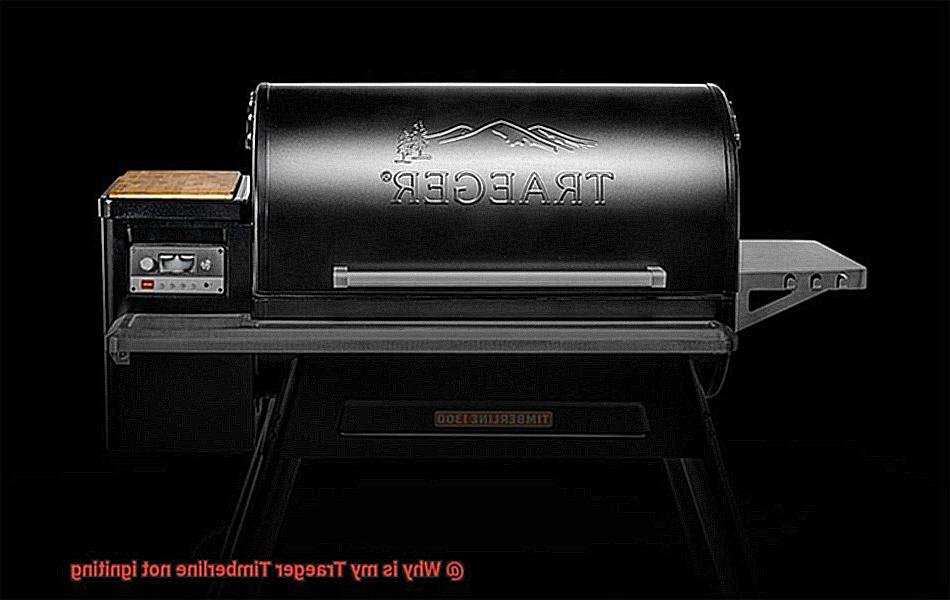
To start, inspect the hopper and auger, ensuring they are properly seated and free of obstructions. Any clogs or obstructions in this area can lead to uneven feeding and disrupt the ignition process. Additionally, check the power cord for any visible signs of damage and ensure it is securely plugged in.
Moving on to the control panel, remove the cover to access the connections and check that all wires are properly connected. Loose or disconnected wires can cause disruptions in the ignition process.
The igniter rod is another crucial component that must be checked for proper functioning. It is responsible for starting the fire in your Traeger Timberline, so any issues with this component can affect ignition. Ensure that it is clean and free of debris, which often causes issues with ignition.
Last but not least, make sure that your Traeger Timberline is properly assembled according to the manufacturer’s instructions. This involves checking that all parts are securely attached and there are no missing components.
Troubleshooting Tips for Igniting the Grill
Grilling is one of the most popular ways to cook food, but it can be frustrating when your Traeger Timberline grill won’t ignite. The ignition process of a Traeger grill involves a hot rod igniter that heats up the wood pellets and creates smoke and heat for cooking. If your grill isn’t igniting, there are several things you can do to troubleshoot the issue and get your grill up and running again.
Check Power Sources
The first step is to ensure that your grill is plugged in correctly and turned on. A loose connection or damaged cord can prevent the grill from igniting. If the grill still won’t ignite, check the electrical outlet to make sure it’s functioning correctly.
Check Pellets and Firepot
Next, check the hopper for damp or clumped pellets, as this can prevent proper ignition. Make sure to dry out damp pellets before use. Also, check the firepot for any debris or blockages, which can prevent proper airflow and ignition. Cleaning out the firepot regularly can prevent issues with ignition.
Check Hot Rod Igniter
The hot rod igniter is responsible for heating up the pellets to ignite them. If this part is faulty or worn out, it may need to be replaced. Additionally, check all electrical connections and wiring for any damage or wear.
Consider External Factors
External factors such as weather conditions can impact ignition. Windy or rainy conditions can make it difficult to get the grill started. In these cases, using an ignition aid like a pellet smoker tube can help.
Contact Customer Service
If you’ve tried everything and still can’t get your Traeger Timberline to ignite, don’t hesitate to contact customer service for further assistance. They can provide guidance on troubleshooting specific issues and help with any necessary repairs or replacements.
Checking the Igniter for Issues
Before you start panicking, it’s important to check the igniter. As an expert on this topic, let me guide you through the troubleshooting steps to get your grill back up and running.
First, unplug your grill and remove the grates and drip tray to access the igniter rod, which is located at the bottom of the firepot. Check for any visible damage or wear, such as a broken wire or a cracked ceramic insulator. If there is damage, it’s time to replace the igniter. However, if there isn’t any visible damage, a continuity test using a multimeter can determine if the igniter is functioning properly.
To perform the continuity test, set your multimeter to the resistance setting and touch one probe to the end of the igniter wire and the other probe to the metal housing of the igniter. If there’s no resistance reading or an infinite reading, it indicates there’s a break in the circuit and you need to replace the igniter.
Sometimes, issues with the igniter are caused by ash or debris buildup on the rod. Use a soft-bristled brush or cloth to gently clean any buildup off. Also, make sure that the igniter rod is positioned correctly and not touching any metal parts of the grill.
To summarize, here are the steps to check your igniter for issues:
- Unplug your grill and remove grates/drip tray
- Check for visible damage on igniter rod
- Replace igniter if there is visible damage
- Perform a continuity test using a multimeter
Clean any ash or debris buildup off of igniter rod
Ensure that igniter rod is positioned correctly and not touching any metal parts of the grill
How to Replace an Igniter if Necessary
It might just be a faulty igniter. Fortunately, replacing it is not as difficult as you might think. Here are the steps to follow:
- Find your tools. You’ll need a Phillips head screwdriver, pliers, and a replacement igniter kit.
- Ensure that your grill is unplugged and has cooled down completely before you begin.
- Locate the old igniter rod inside the grill. It’s a small metal rod located near the center of the cooking chamber below the grill grates.
- Remove the old igniter by unscrewing the bracket holding it in place using a screwdriver or pliers.
- Disconnect the wires connected to the old igniter rod and take note of which wire goes to which terminal so you can reconnect them correctly later on.
- Insert the new igniter into the bracket and secure it in place with screws.
- Reconnect the wires to their respective terminals on the new igniter rod and make sure they are tightly secured using pliers.
- Plug in the grill and turn it on to see if the igniter is working properly. If it sparks and lights up properly, congratulations. You have successfully replaced your Traeger Timberline’s igniter.
It’s important to note that if you’re not confident doing this yourself or are unsure of how to do it properly, it’s best to seek professional help from a Traeger technician or authorized repair center. Trusting experts can ensure that your grill works safely and correctly.
Checking the Pellets for Quality and Freshness
Don’t let poor quality or old pellets ruin your barbeque plans. Checking the quality and freshness of your pellets is crucial for ensuring a successful grilling experience.
Let’s dive into some tips on how to guarantee your pellets are top-notch.
Firstly, inspect the bag for any signs of damage or punctures. Damaged bags can allow moisture to seep in, compromising the quality of the pellets.
Next, examine the pellets closely. They should be uniform in size and shape with a shiny surface, and no visible cracks or splits. If they appear dull or powdery, it could be a sign that they are old or have been exposed to moisture.
To test the freshness of your pellets, take one pellet and break it in half. A fresh pellet should break cleanly without crumbling or disintegrating. If it breaks apart easily or crumbles into dust, it may be too old or low quality.
Proper storage is also key in maintaining pellet quality and freshness. Keep them in a cool, dry place and avoid exposing them to direct sunlight or humidity.
In summary, here are the steps for checking the quality and freshness of your pellets:
Inspect the bag for damage.
Examine the pellets for uniformity and shine.
Test freshness by breaking a pellet in half.
Properly store your pellets.
Storing Pellets Properly to Avoid Moisture Damage
Here are some essential tips to keep in mind when it comes to pellet storage:
First and foremost, moisture is the enemy of pellets. Composed of compressed sawdust with no chemicals or additives, pellets readily absorb moisture and swell up, making it difficult for them to flow smoothly through the auger and ignite properly. Therefore, it’s essential to keep your pellets dry and cool. Avoid storing them in areas exposed to direct sunlight or high humidity levels, such as basements, garages or sheds.
Investing in a dedicated storage container or bin with a tight-fitting lid is also an excellent way to maintain pellet quality. This container will keep out moisture, dust and other contaminants that can affect performance and flavor. Moreover, it will help you organize your pellets more efficiently and keep your grilling area clean and tidy.
When purchasing pellets, always choose high-quality brands that use premium materials and have strict manufacturing standards. Inferior pellets can contain impurities that clog up the auger and reduce ignition and heat output. Therefore, it’s crucial to invest in reliable brands that deliver consistent quality.
Lastly, before adding new pellets, ensure that the hopper is free of debris. Any debris in the hopper can cause blockages in the auger, leading to poor ignition and reduced heat output. Keeping the hopper clean will prevent this problem from occurring.
geN_qM1mWp8″ >
Also Read: Traeger Grill Not Heating Up to 450
Conclusion
If you’re having trouble getting your Traeger Timberline to ignite, it can be frustrating and even ruin your plans for a delicious meal.
But don’t worry, there are several possible reasons why this could be happening. It could be due to a lack of fuel or airflow, a malfunctioning igniter or controller, or even just user error.
Remember to always follow proper safety protocols and consult the manufacturer’s instructions if you’re unsure about anything.

